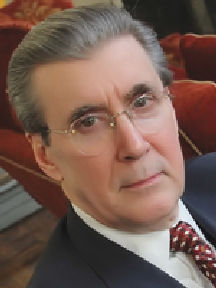
In the spring of 2021, then-Gov. Andrew Cuomo approved a record-breaking $212 billion spending plan for the fiscal year that began on April 1.
Spending all of the $12.2 billion, one-shot federal COVID revenue was not enough revenue to balance his budget. To meet that end, Cuomo deferred $3.5 billion in Medicaid payments into the next fiscal year and raised taxes.
New York’s highest earners now pay a 10.9 percent state income tax. In addition, a 1 percent surtax was added to the state’s capital gains tax. Estate taxes jumped from 16 percent to 20 percent on estates valued over $10 million. The corporate franchise tax went from 6.5 percent to 7.25 percent.
Cuomo’s budget, which increased by a staggering 10 percent in 2021, was twice the expense budget of Florida, which has 3 million more people than the Empire State.
In 2021 and early 2020, additional revenues continued to flow into the state’s coffer. There were more federal pandemic dollars, and thanks to an expanding economy, significantly more tax revenue.
“Initially,” state Comptroller Tom DiNapoli noted in his recent analysis of the state’s fiscal year, “tax collections were expected to increase only 10.6%; however, year to date collections have increased 31.2 percent.”
This was all good news for Gov. Kathy Hochul as she prepared an election year budget that appeases big government radicals in her party and state and municipal employees.
Hochul recommended more spending even though there are ominous signs that the economy may slow down this year, and inflation is hitting levels New Yorkers have not witnessed since the early 1980s.
The bloated budget Hochul presented to the state Legislature not only spends the excess revenues but includes another $5 billion in capital funding from President Biden’s Infrastructure Investment and Jobs Act.
Hence, total spending is projected to increase to $217 billion. And that’s before insatiable legislators begin negotiating for more swag for their favorite interest groups.
It should come as no surprise that the biggest spending increase is school aid. To placate teacher unions, the Executive Budget proposes $31.2 billion in aid, up 7.1 percent from the previous fiscal year.
There is the proposal to move forward with the final phase-in of the so-called “middle class” tax cuts, but that’s a pittance—about $162 million in relief.
While the Hochul administration is boasting that her budget increases reserves in various “rainy day” funds, totals will still be relatively low. Reserves, projected to be $6.1 billion, are far below the permissible maximum level of $19.4 billion.
And Hochul’s proposed reserve numbers are a bit deceptive. The state comptroller’s report states that the increase “disproportionately utilizes informal, unrestricted reserves by leaving resources in the General Fund with the administrative designation ‘reserve for economic uncertainties.’”
Those funds are very fungible. They “could be obligated and spent at any time at the Department of Budget’s discretion, for any appropriate purpose,” the report says.
How convenient.
Furthermore, the comptroller notes, these “informal reserves have no obligation of being replenished. Accordingly, such funds do not have the same stabilizing value as formal, statutorily restricted revenues.”
Then there’s the lack of budgetary transparency and accountability. Like her predecessor’s budgets, Hochul’s financial plan “identifies billions of dollars allocated to broadly define purposes with no specificity.” In other words, billions in appropriations could be easily misused.
Another Cuomo budget gimmick Hochul is adopting: the comptroller’s oversight authority to pre-review contracts for Medicare managed care contracts and competitive bidding requirements are slated to be eliminated.
Thanks to the influx of windfall revenues, Hochul had an opportunity to repeal last year’s income tax increases and to truly replenish the state’ depleted reserve funds.
Instead, Hochul chose to continue Cuomo’s tax-and-spend policies. This may get her past the election in November, but come 2023, when the “free” money from Washington runs dry and the economy tanks, there will be dire consequences for New York taxpayers who will be the ones stuck paying the tab for Hochul’s largesse with even higher taxes.






